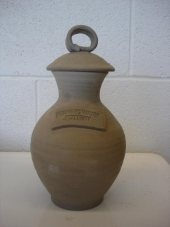








Shaz Jameson wrote:Good point Charli.
Aly -- using them above ground? I thought it was always in the ground? Did you just got for pinhole size then?


Shaz Jameson wrote:What about re-using plastic bottles for ollas in places where it freezes?
I know plastic is the demon but it's free and it's re-using... or is the problem with leachate?
I'm just thinking I've got really sandy soil and along with a 'junk pit' some ollas could be quite helpful... I will have a scout around for unglazed clay pots, that's an awesome link

Ruben Jaime wrote: My raised bed garden gets full sun at the moment and I've tried to place things where they wouldn't interrupt each others sun too much. At least by a newbies judgement.